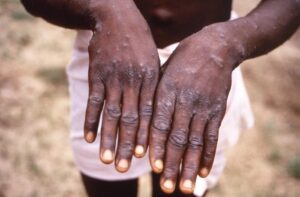Leclercia adecarboxylata
While authorising the urine result – I found that a urine sample from the community has grown Leclercia adecarboxylata. The patient is a young female complaining of increased frequency. The number of organisms in the urine was >100,000 organisms/ml.What is the significance? The bacteria Previously known as Escherichia adecarboxylata, it now belongs to a new genus Leclercia […]
Infectious mononucleosis and Epstein-Barr Virus
Cause: Epidemiology: Transmission: Signs and symptoms: Complications Diagnosis If you want to know about a heterophile antibody, see this video. Atypical lymphocytes can also be seen in CMV, HIV, HHV6, rubella, mumps, viral hepatitis, toxoplasmosis, typhus, lead poisoning etc. Differential diagnosis: Treatment:
Japanese encephalitis vaccine: study note
Vaccine Inactivated vaccine (IXIARO®), NO live virus.Adjuvant: Aluminium hydroxide (improves immunogenicity).Storage: +2°C to +8°C and protected from light. Administration Primary immunisation Primary immunisation should ideally be completed at least one week before potential exposure to the Japanese encephalitis virus. Full immunity takes up to one week to develop after the second dose. Standard schedule Rapid schedule 1st dose […]
Infection associated with immune checkpoint inhibitors
Immune Checkpoint Inhibitors (ICI) are used to treat malignancy (breast CA, bladder CA, cervical CA, lung CA, colon CA, Hodgkin lymphoma etc). There are three types of ICIs Type of ICIs Example Programmed death 1(PD-1) inhibitors Atezolizumab, Avelumab, Durvalumab Programmed death 1 ligand (PD-L1) inhibitors Nivolumab, Pembrolizumab, Cemiplimab, Dostarlimab cytotoxic T lymphocyte-associated antigen 4 (CTLA4) […]
Infection associated with chronic granulomatous disease (CGD)
Introduction CGD is a rare inherited immunodeficiency disorder where the NADPH oxidase in the phagocytic cells is absent or malfunctioning. Most CGDs are inherited as X linked, while the rest are autosomal recessive. Phagocytes, like neutrophils and monocytes, in the absence of NADPH oxidase, cannot kill the ingested pathogens due to the lack of oxidative burst. As a result, […]
Ibrexafungerp: A novel antifungal
Ibrexafungerp, an enfumafungin derivative, belongs to a new family called triterpenoid antifungals.This is a new class called “-fungerp”. This antifungal class inhibits glucan synthetase required for fungal cell wall synthesis. One of the major antifungal class echinocandins also acts by this mechanism and has been used since 2001. Echinocandins, however, have poor bioavailability and are […]
Human Monkeypox
Monkeypox is an emerging disease. It was first discovered in 1958 in a captive monkey population, from which it received its name. However, monkeys are not its main reservoir. The largest natural reservoir population is rodents. The full lifecycle and the extent of the reservoir population are still unknown.Monkeypox is a zoonosis. The virus: It […]
How did I prepare for part 2 FRCPath?
One of our registrars passed part 2 recently. I asked him about his preparation. He kindly shared with me some useful tips which may help anyone preparing for part 2. What did you read? What I read was a mix of Here are the links to the resources mentioned Mandell, Douglas, and Bennett’s Principles and […]
Fusobacterium necrophorum
Bacteria Fusobacterium necrophorum is a Gram-negative, non-motile, non-spore-forming anaerobic pleomorphic bacterium. It may appear in coccobacillus or filamentous forms, which are more common in younger cultures. It is a member of the normal bacterial flora of the oropharynx, genitourinary tract, and gastrointestinal tract. Culture and identification There are 14 species of Fusobacterium, 10 of which […]
Example of short answer questions and OSPE (FRCPath Microbiology part 2)
A GP has called you about a 2-year-old girl. Her mum noticed scratch marks on the girl's face in the morning. On questioning, Mum told the GP that she noticed a bat in her room but managed to get it out of the room. She doesn't know how long the bat was there or if […]
